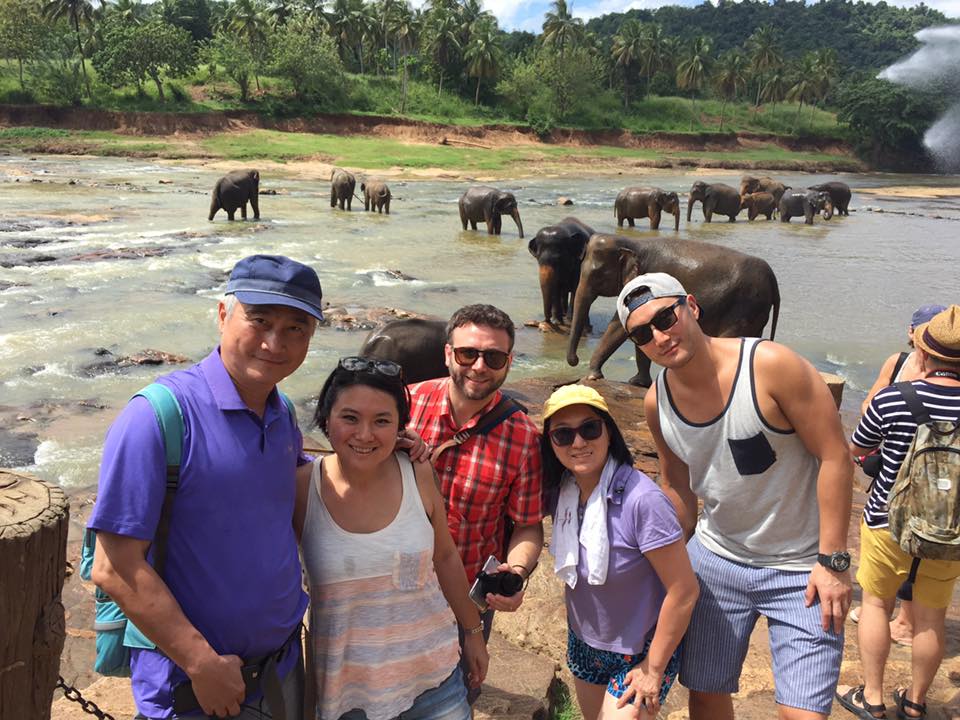
With Beijing’s growing influence, its dialect, Mandarin, also known as Putonghua (the common language), has become the most dominant Chinese language. But this wasn’t always the case, not according to the speakers of other Chinese languages.
In the late 80’s, my family moved from Japan to Taiwan. This was just a few years after the Taiwanese government finally lifted the martial law. I was six years old.
Let’s quickly revisit Taiwanese history and its languages: Historically, at least up to the 1940s, most people in Taiwan spoke Hokkien, which is a version of a southern Chinese language from Fujian province, where many Taiwanese people came from during the 1700’s. During the Japanese occupation, some Japanese words and expressions were integrated into the Taiwanese Hokkien language. I remember clearly my grandparents speaking this Japanese-fied version of Hokkien.
When the Kuomintang (KMT) took control of Taiwan, they made Mandarin the official language and forced everyone to learn it.
I spoke neither Hokkien or Mandarin.

Regardless, my parents threw me into a local school.
During class one day, I needed to use the toilet. Unable to communicate with the teacher verbally, I stood up and made my way towards the washroom. I only made it halfway down the hall when my teacher caught up with me, led me back to the classroom and sat me back down in my little wooden chair at my desk. A few moments later, I got up again and made another attempt. The teacher got me again and scolded me as she led me back to my seat.
I didn’t know exactly what she said, but I understood that she was displeased with me. I didn’t dare to get up again. Instead, I sat in my chair and concentrated on holding it in.
Eventually, a warm stream trickled down my legs and created a large, dark stain on my pleated navy blue skirt and a yellow pool around the legs of my little wooden chair. I burst into tears—I was powerless without speaking the language.
This sad little story is a segway to discuss the power of language, and specifically, the Chinese language. Spoken Chinese is organized into five main groups, Mandarin, Yue, Min, Wu, and Hakka. These languages are mutually intelligible. Within those groups, there are hundreds of dialects, limited to small geographical areas.
Mandarin is only one of the hundreds of spoken Chinese languages. The Beijing dialect is the most common, spoken by approximately two-thirds of the Chinese population. At 55 million speakers, Cantonese, which is part of the Yue family, is the second most common Chinese language. Hokkien, a language that is common in Taiwan and other countries where Fujan ancestry is common, is part of the Min language family.
How did Mandarin become “Putonghua,” the common language of China?
When Sun Yat-Sen overthrew the Qing Dynasty in 1911, Beijing became the capital of the new China. After some debating, the leadership decided that Mandarin is the official language of the new republic (This is strange because Dr. Sun and many of the leaders of the new republic are from Guangdong Province, and their mother tongue would have been Cantonese).
In Taiwan, Mandarin is known as “Guóyǔ”, literally translates to “the national language.”
During the occupation, the Japanese didn’t force the Taiwanese people to learn the language of their colonizers.** However, when the KMT arrived, they did. Baba told me a story of how his classmates were punished for speaking Hokkien at school. They had to wear a humiliating sign that said, “I spoke Hokkien” for the whole day for speaking the “uncivilized” tongue.
Here in Hong Kong, 97% of the population speaks Cantonese. If Beijing had their way, they would eliminate Cantonese completely. However, that would create an outcry that Beijing is not prepared to deal with. Instead, they slowly influence the educational curriculum in Hong Kong, to teach the next generation their version of the history.
The truth is, Mandarin is already common in Hong Kong. When my parents passed through Hong Kong in the early 90s, they said people didn’t speak Mandarin and yelled when spoken to in Mandarin. Thirty years later, the majority of people still speak Cantonese, but I can now get by speaking Mandarin if English fails.
Hmm. I wonder what the common language will in Hong Kong in another thirty years.
**As it turns out, The Japanese implemented an imperialist movement during their occupation. It was an assimilation initiative that forced Taiwanese people to adopt Japanese names and learn to speak Japanese.



